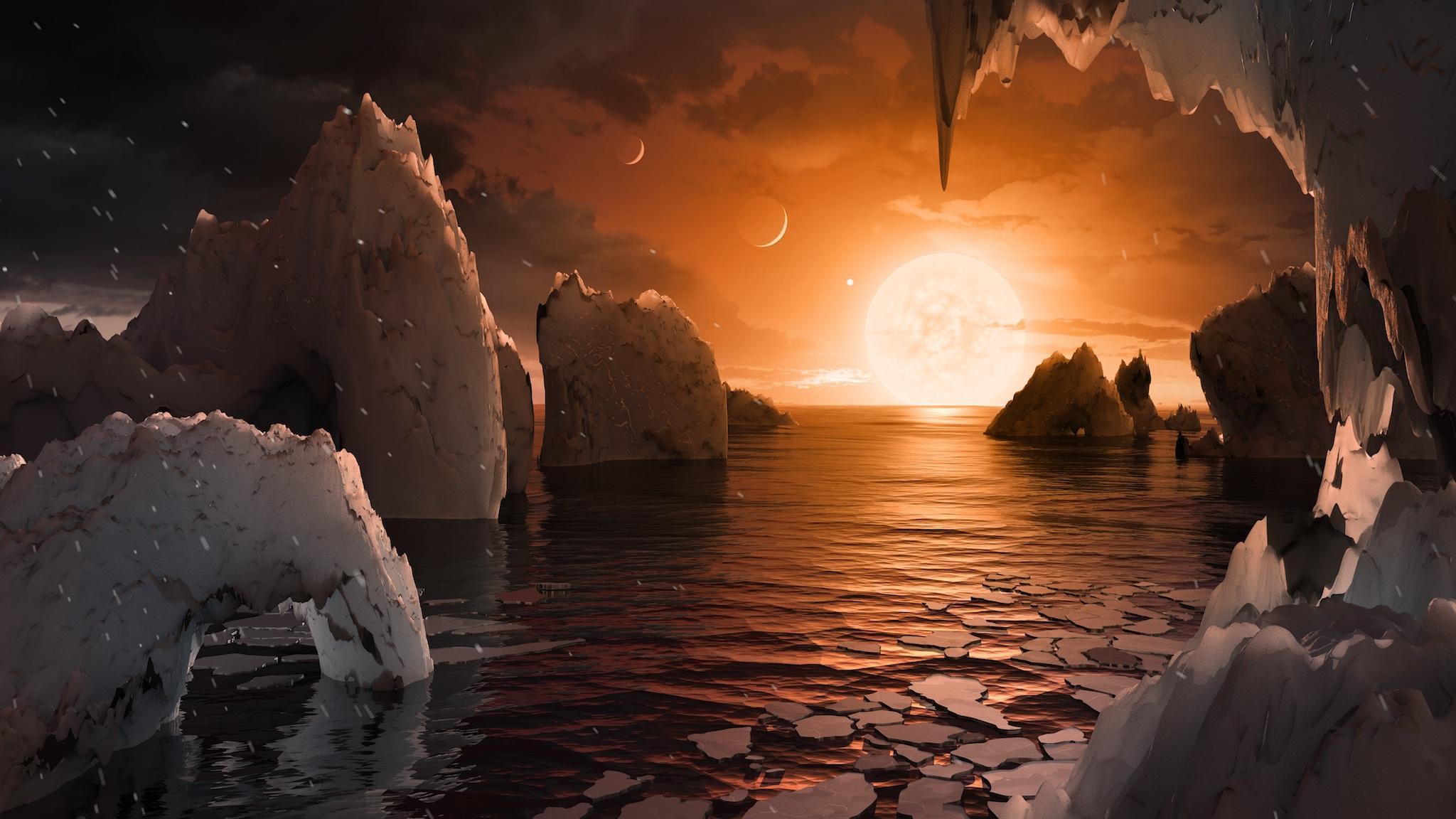Trappist 1: Planets in Nasa's 'holy grail' solar system could support life, scientists say

Your support helps us to tell the story
From reproductive rights to climate change to Big Tech, The Independent is on the ground when the story is developing. Whether it's investigating the financials of Elon Musk's pro-Trump PAC or producing our latest documentary, 'The A Word', which shines a light on the American women fighting for reproductive rights, we know how important it is to parse out the facts from the messaging.
At such a critical moment in US history, we need reporters on the ground. Your donation allows us to keep sending journalists to speak to both sides of the story.
The Independent is trusted by Americans across the entire political spectrum. And unlike many other quality news outlets, we choose not to lock Americans out of our reporting and analysis with paywalls. We believe quality journalism should be available to everyone, paid for by those who can afford it.
Your support makes all the difference.Two planets in a solar system that looks like ours could be habitable, according to new research.
The Trappist-1 system brought worldwide excitement when it was found last year. In many ways, it resembles our own neighbourhood – filled with worlds that scientists said at the time could potentially be homes for life.
Now new research has isolated two of the system's planets as potential homes – either for us, or life like us. It explored what conditions might be like on those planets, going through each to find the chances they would be able to serve as an environment for life.
The two important planets probably have water and a source of heat. Both of those are seen as key parts of life on Earth and probably are required for alien life anywhere else in the universe, too.
Scientists now hope they can use new equipment like the imminent James Webb Telescope to be able to look at the planets in more detail. For now, much of the work is done on – but with time, scientists might be able to see far more about what's going on there.
For now, scientists used complex modelling to try and understand how the planets orbit around their star, Trappist-1. That was made extra difficult by the fact that the planets circle in a somewhat egg-shaped orbit, but that also means they might experience a phenomenon called tidal heating.
Tidal heating happens as the planet gets pushed and pull on its strange orbit. It helps create warmth and other features from deep under the surface of moons in our solar system like Jupiter's moon Io, and it could be doing the same on the planets in Trappist-1.
“Because the TRAPPIST-1 star is very old and dim, the surfaces of the planets have relatively cool temperatures by planetary standards, ranging from 400 degrees Kelvin (260 degrees Fahrenheit), which is cooler than Venus, to 167 degrees Kelvin (-159 degrees Fahrenheit), which is colder than Earth’s poles,” Barr said in a statement. “The planets also orbit very close to the star, with orbital periods of a few days. Because their orbits are eccentric – not quite circular – these planets could experience tidal heating just like the moons of Jupiter and Saturn.
“Assuming the planets are composed of water ice, rock, and iron, we determine how much of each might be present, and how thick the different layers would be. Because the masses and radii of the planets are not very well-constrained, we show the full range of possible interior structures and interior compositions."
Trappist-1 was found early in 2017, and was the most populated solar system ever found. At least three were seen as "holy grail" planets – sitting near enough to their planet as to be warm enough for life, but so close that any flourishing aliens would be burnt away.
Join our commenting forum
Join thought-provoking conversations, follow other Independent readers and see their replies
Comments